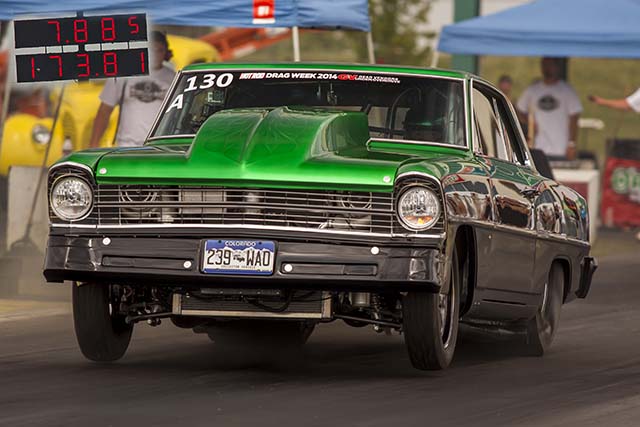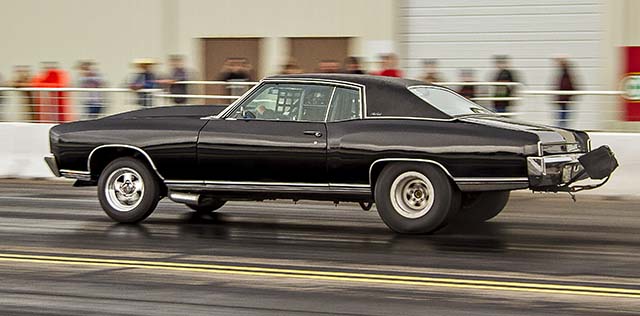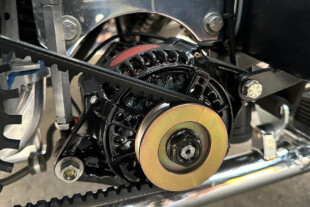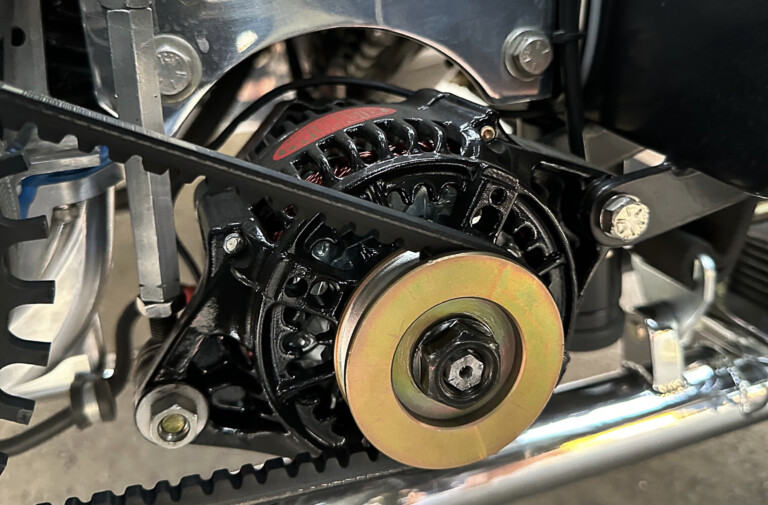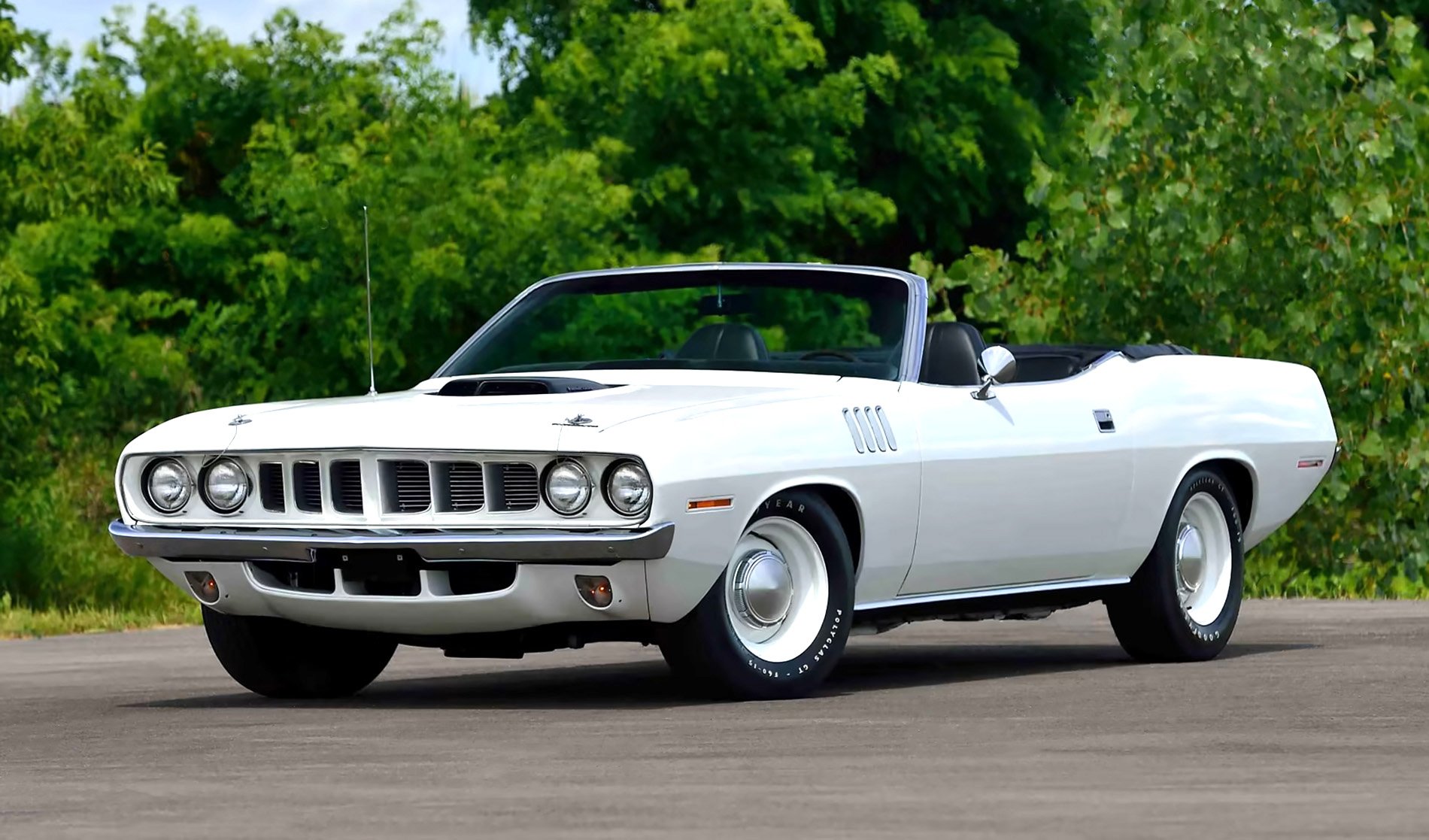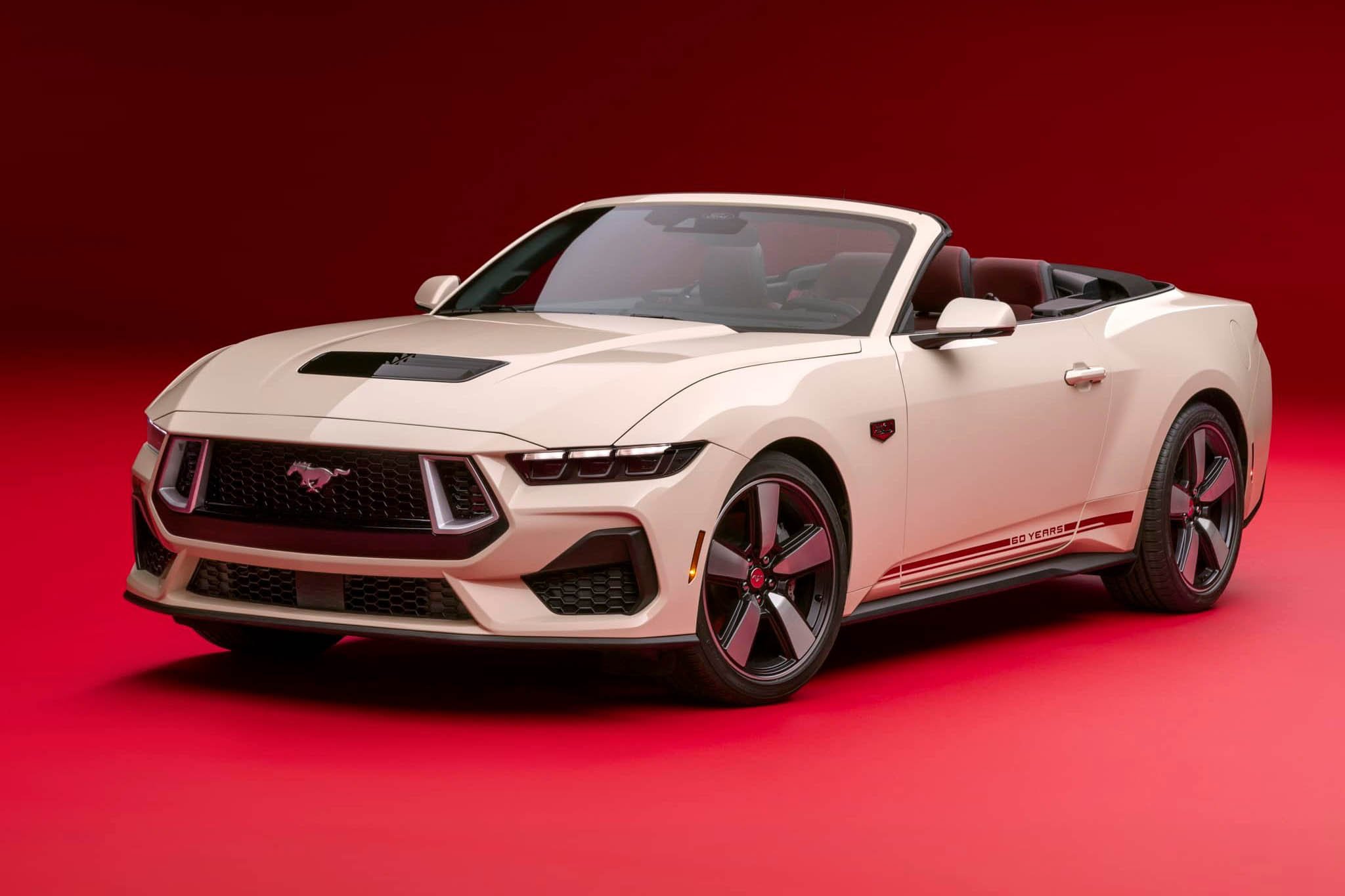Steady advancements in engine technology have brought us into the golden age of streetable horsepower
For classic car fans, the holy grail of engines–the 426 Hemi–first showed up on the streets in 1966 in Plymouth’s Belvedere and Dodge’s Charger and Coronet models. The engine known as “The Elephant” was a beast. It was race bred, innovative, made huge power and came with its own mystique. Even today the 426 Hemi is a legend–and if you need proof just tune in to one of those auto auction shows that are so popular and watch how quickly the dollars climb any time a Mopar equipped with an original Hemi pops up.
But the truth of the matter is Chrysler never really intended to sell the 426 Hemi to the public. The engine was originally developed expressly for competition in NASCAR, and Chrysler only began putting a detuned version in street cars because the sanctioning body required it. The 426 hemi was a $1,100 option (that’s just over $8,000 in today’s money), which was really quite a lot considering a base 1966 Charger sold for just over $3,000.
And even in its detuned street version complete with a different intake and smaller cam, the 426 Hemi displayed very poor manners. Dual carburetors made it difficult to keep the engine tuned for use as a daily driver. That, combined with the high cost, meant that very few customers actually ticked the options box for a Hemi when ordering a new car. Incidentally, that rarity is what helps make Hemi equipped Mopars so popular today.
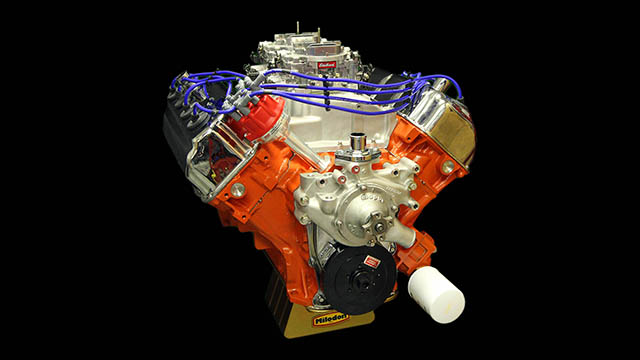
When it was first available in street cars in 1966, the 426 Hemi was pretty revolutionary. But today we have engines that put out similar or more power while getting 20 mpg–with the air conditioning on. We’ve come a long way!
Still, it is kind of funny when you consider all the fuss people still make over an engine that was originally rated at 425 hp. The actual output is probably closer to 500, but by today’s standards that’s still a relatively mild performance engine. Today, you can march into your local Dodge dealership and plunk down a deposit for a new Challenger Hellcat with a supercharged Hemi, which will get you an incredible 707 horsepower and 20+ miles per gallon for a little over 60 grand. Oh, and don’t forget air-conditioning, airbags, a touchscreen entertainment/navigation system, comfortable seats and all the other modern car amenities that were science fiction back in ’66.
It is amazing how far we have come in the 50 years since the 426 Hemi was first introduced. The Dodge Challenger Hellcat may be making the biggest horsepower numbers, but all of the big three manufacturers have multiple models capable of eclipsing the original Hemi’s horsepower mark. Chevrolet recently announced that the new Corvette Z06 will be able to accelerate from 0 to 60 in 2.95 seconds and run the quarter-mile in 10 seconds WITH AN AUTOMATIC TRANSMISSION! Ford, meanwhile, is set to have the 2015 Mustang in dealerships soon so you can have the original pony car which has been completely redesigned from the ground up and sports 450 hp at the rear wheels for a mere $36,000.
Being able to buy that kind of horsepower is cool and all, but all it really requires is decent credit. And when you get right down to it, 36 grand is still a lot of money. What we think is really cool are the things that everyday gearheads are doing to produce horsepower in their own street machines.
Thankfully, the auto manufacturers aren’t the only ones pushing the horsepower envelope. The performance aftermarket has also really been coming up with a lot of cool stuff to help every day car guys (and gals) make big-time power gains without breaking the budget.
Zach Grubb is the lead wrench at noted tuning shop JHR Performance in Mooresville, NC. JHR Performance works mostly with GM products and specializes in the LS engine family, but Grubb says he has seen performance gains in practically every brand and model. “The biggest thing when it comes to the power gains we’ve been seeing has been electronics,” he says. “The engine management systems out now have come a long way, and they not only help you make more power, but it also helps make things easier on your engine and keeps the car drivable. We’ve got drag radial cars running 4.0 seconds in the eighth mile at 200 mph. Five years ago with a similar amount of money invested those cars were running 4.50’s.”

Engine builder Keith Dorton concentrates on cutting internal drag on his race engines, and the improved efficiency means big horsepower gains without the use of power adders.
Certainly, part of the reason it has gotten easier to make big steam with power adders like a turbo or a supercharger is modern engines are not only much more efficient than their predecessors but also capable of withstanding greater power loads. Smart engine builders like Keith Dorton of Automotive Specialists in Concord, NC, have been able to make big power improvements in classic engines without changing the look simply by using modern components in the internals that increase the engine’s efficiency.
“It is easier to make power these days,” he says, “and I think a lot of that comes from the quality of parts that are available now. We have seen big advancements in materials and coatings, and you can get substantially lighter pieces that have more durability and longevity. Back in the 60s we were building race engines and thought that you had to have a big, beefy part for it to be durable enough to hold up to the extra horsepower. But that extra weight only created more stress as you tried to gain more rpm’s. Over time, the piston and rod manufacturers got smart and started whittling down all that extra material. If you do it smart you can cut down on the inertial forces without giving up durability. And as a result, you can make more power.”
Over time, the discoveries made in racing almost always make their way into street engines. Lightweight slipper-skirt pistons, low-tension rings, low viscosity motor oils, better flowing cylinder heads, you name it, they practically all were first developed for racing but now are common in performance street engine builds. Manufacturers are more than happy to let the professional race teams pay for the R&D to develop a new concept and then pass those advancements along to us Regular Joes once the racing teams have inevitably moved on to something else.
A perfect example is the four-pattern camshaft Comp Cams developed for NASCAR racing. For years the multi-pattern cams were one of the worst kept secrets in stock-car racing. The idea was to develop a single cam that had lobes matched to suit the needs of the four outer cylinder with their longer intake runners, and a different grind for the lobes working the inner four cylinders, which had shorter intake runners. The concept proved itself effective on the race track, and Comp’s engineers not only determined which lobe patterns worked best but also developed CNC grinding programs that significantly cut down the cost of manufacturing such specialized cams. When NASCAR allowed an updated intake manifold the special camshafts were no longer needed, and Comp recently began offering them to the general public. For anyone running a single-plane intake manifold on their engine, the four-pattern camshafts are usually worth significant horsepower.
During a recent conversation, Dorton told us about rebuilding a classic Chevy 283 small block. The engine was going into a restored sports car that was going to be used for vintage road course racing, so while the goal was more power the engine still had to look period correct.
“Everything on the outside of the engine had to go back on,” Dorton says, “That included the original cast iron Power Pack heads and everything else. So we were limited to making changes only to the internals.” Dorton didn’t want to get into the specifics of what he changed, but we do suspect a new cam, modern pistons with low-tension rings, more compression and a little port work, among other things. “Back in the early ’60s when they were racing these engines they made less than 300 horsepower, and when we ran the engine on the dyno with the original heads we were just a tick under 500. So, needless to say, we were pretty happy with it.”
Possibly the most extreme example of how far we’ve come with street horsepower is the annual party of wretched excess that is Hot Rod’s Drag Week. In Drag Week street legal cars race at five drag strips spread across several states on five consecutive days. The idea is to name the fastest street car in America. The cars racing in the event have to be street legal and have to make every mile under their own power (no trailering here). Also, no support trucks are allowed, so if you can’t fit the supplies you need in the trunk you’d better be ready to pull a trailer.
The top class in Drag Week is called Unlimited, and it’s filled with full-blown race cars that the owners somehow managed to get tagged. There is endless debate about whether these are “real” street machines, but other classes are filled with great cars and vintage iron that have spent years and hundreds of thousands of miles on the street.
A perfect example is the 1970 Monte Carlo campaigned by Jeff Ferguson and George Gallimore that was in strong contention in the Super Street Power Adder class until they broke traction and blew the engine on the fourth day of competition. Even though they didn’t win, we love what this car is all about, and it proves just how far we’ve evolved when it comes to developing tractable horsepower in street cars.
Just like a street car should be, the Monte is a steel-bodied car riding on the same chassis it was given at the factory. Ferguson has installed mini-tubs in order to fit bigger tires, but the car hasn’t been back-halved and still retains the stock suspension pickup points.
But what Ferguson and Gallimore put under the hood is far from stock. To compete in the Super Street Power Adder class they chose a 555 cubic inch big block with two big 88 mm turbos helping to push the air into the cylinders. The engine already generates nearly 10.0:1 compression, and at full tune the turbos are pushing in another 36 pounds of boost to produce over 2,200 horsepower–in a street car!
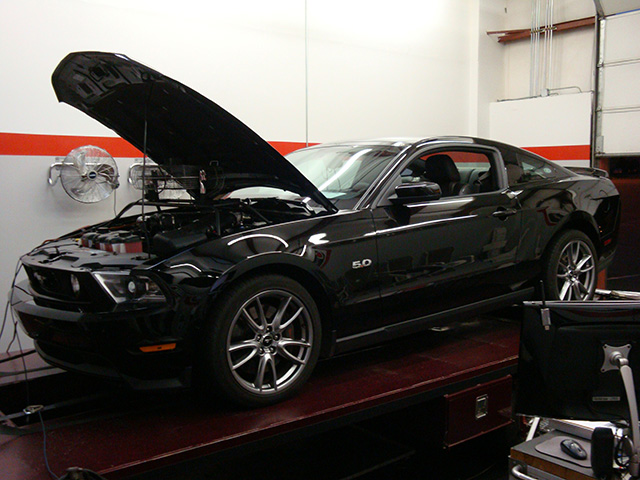
Modern engine control systems means your hot rod can be tuned to make big power without becoming so unmanageable that it is no fun do drive to your local cruise night.
“This is definitely a street car,” Ferguson says. “We did a lot of testing this year to make sure we were ready for Drag Week, and we put around 700 miles on the car just driving it around town and up and down the road. We even had an air conditioner on it. It worked pretty good, but we decided we needed to cut more weight so we took it out.”
Ferguson says they could choose any type of power adder for the class but the decision to go with a turbocharger setup was an easy one. “Practically anyone who is doing this and running up front is using turbos,” he explains. “They are just so much easier on the engine, especially when we are on the road.
“A lot of guys run nitrous because you obviously don’t make any power until you spray the nitrous. But you have to run so much cam with the nitrous motors to make good power, the engine just doesn’t run well at low rpms driving around town. And a lot of guys run Prochargers, but really I think the obvious choice is turbo for a high horsepower car that you want to run on the street as well. You can run low compression and a similar cam profile (for a naturally aspirated motor), it’s just much more friendly for the motor.”

Modern engine controls are making it possible to build engines with unheard of levels of power while still maintaining street manners.
Part of what makes a turbocharged system like the one Ferguson and Gallimore raced be driveable on the street while also brutal on the track are the engine and traction controls which can be easily adjusted. On the track the pair can control the boost by adjusting the CO2 pressure holding the waste gates closed. This not only allows them to increase the boost as the car goes down the track and gains speed, but it also means they can put zero pressure behind the waste gates for street driving and run the engine in naturally aspirated mode.
“As long as you don’t have the CO2 on, it makes whatever the spring are in the waste gates,” Ferguson says. “We had two-pound springs installed. So unless you really romped on it, it didn’t make any boost.
“You’re still trying to drive an 840 horsepower engine on the street,” he says with a laugh, “but that’s still a lot easier than 2,200!”
It still amazes us what racers and hot rodders are able to do these days when it comes to making gobs of horsepower work on the street. Ferguson and Gallimore may be pretty hardcore racers, but they don’t have a professional crew helping them out, and they are getting it done with a real-world budget. And they aren’t the only ones. With the advancements in self-learning EFI systems, trouble-free bolt on power adders and the general inventiveness of the automotive aftermarket we’ve made some pretty incredible gains in the evolution of street horsepower over the last five years. We can’t wait to see what the next five brings!


